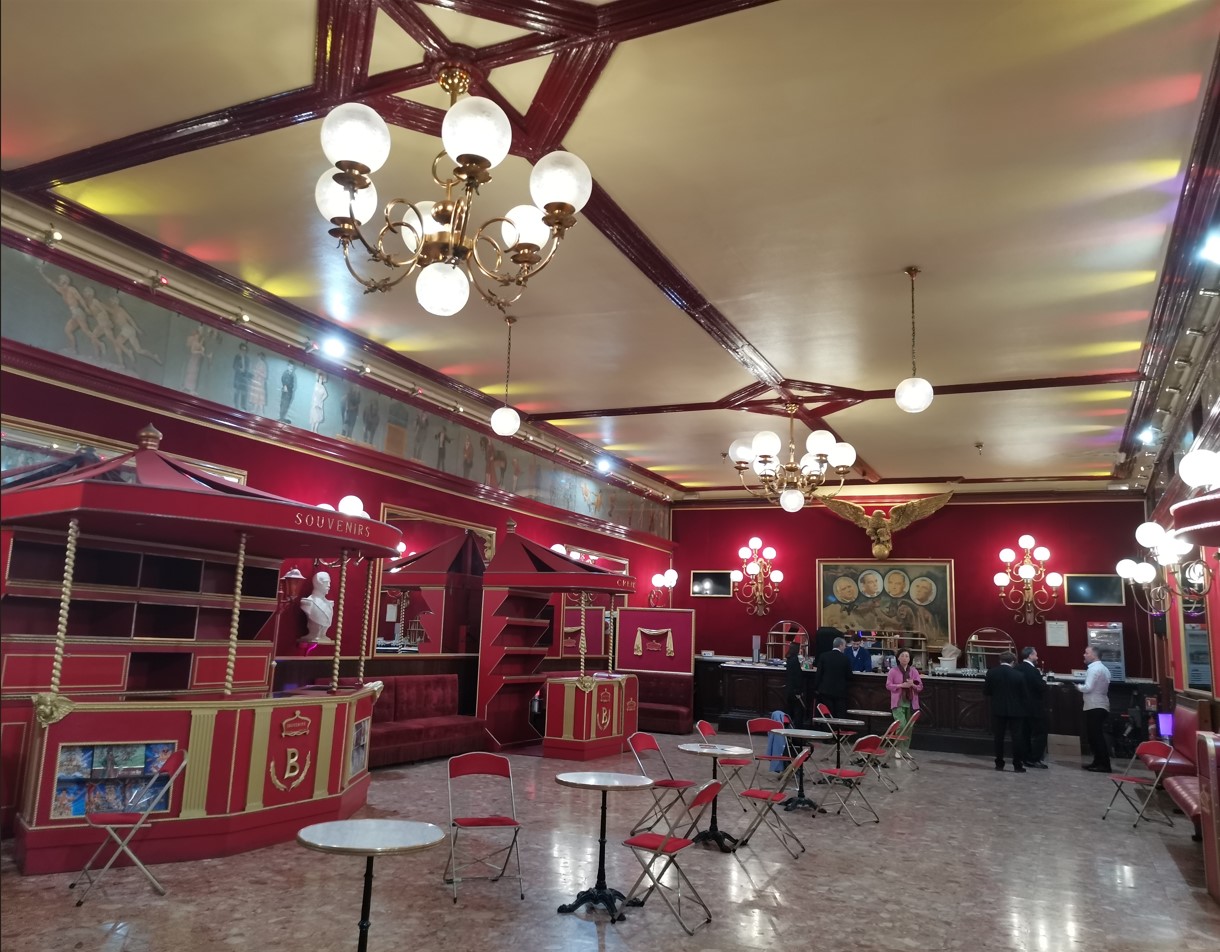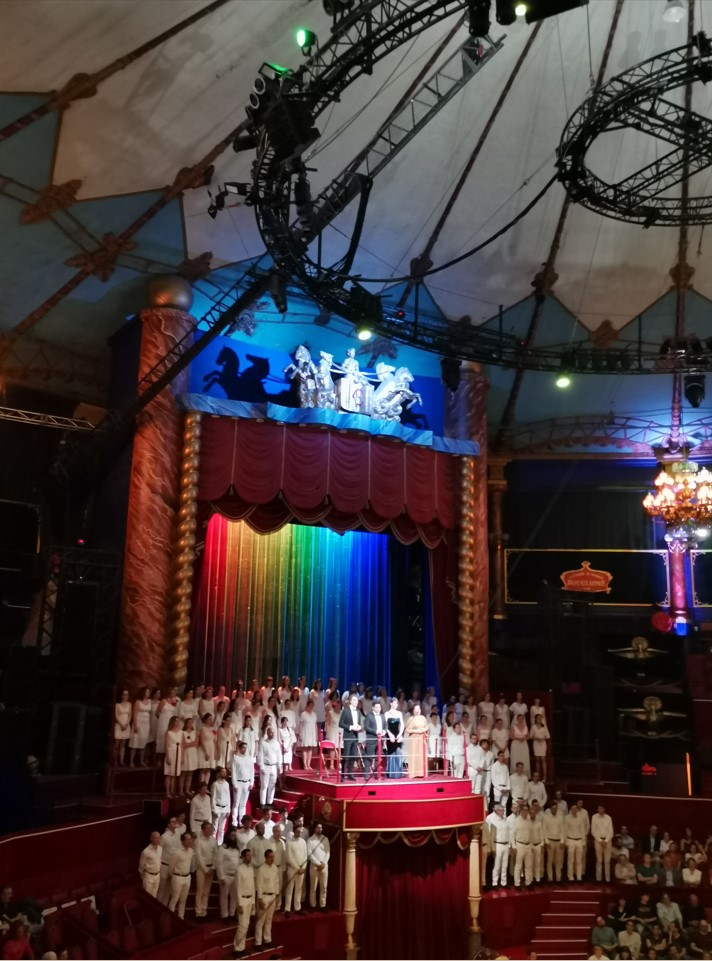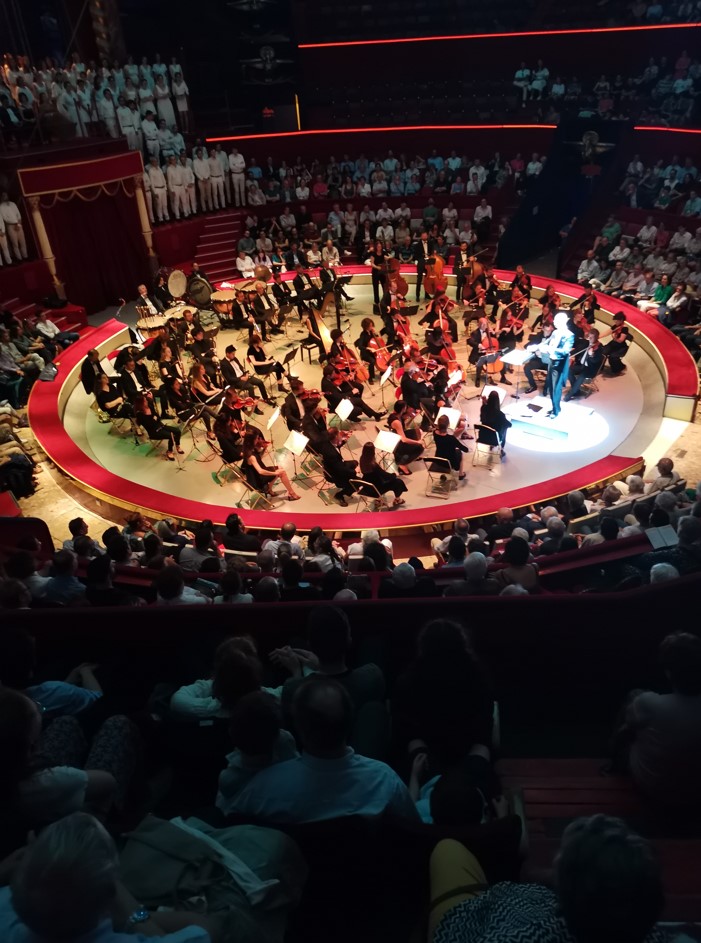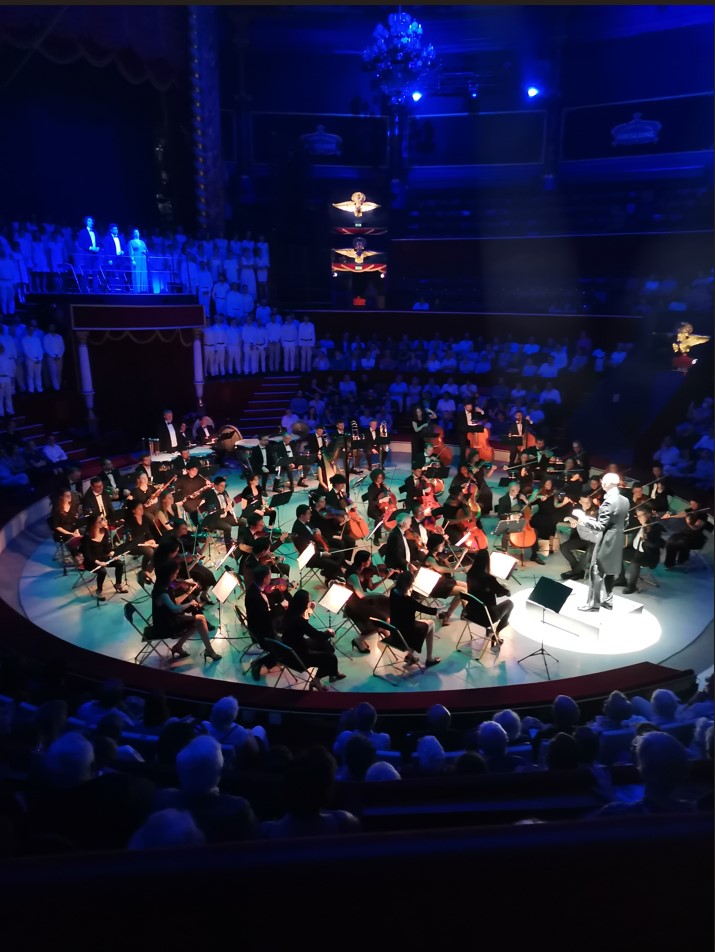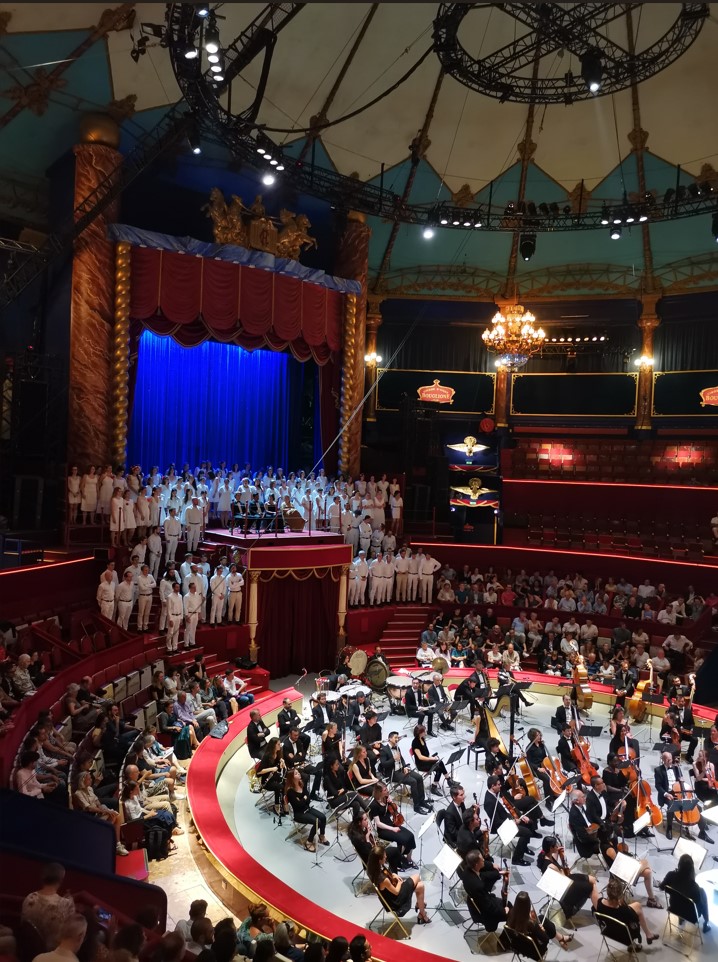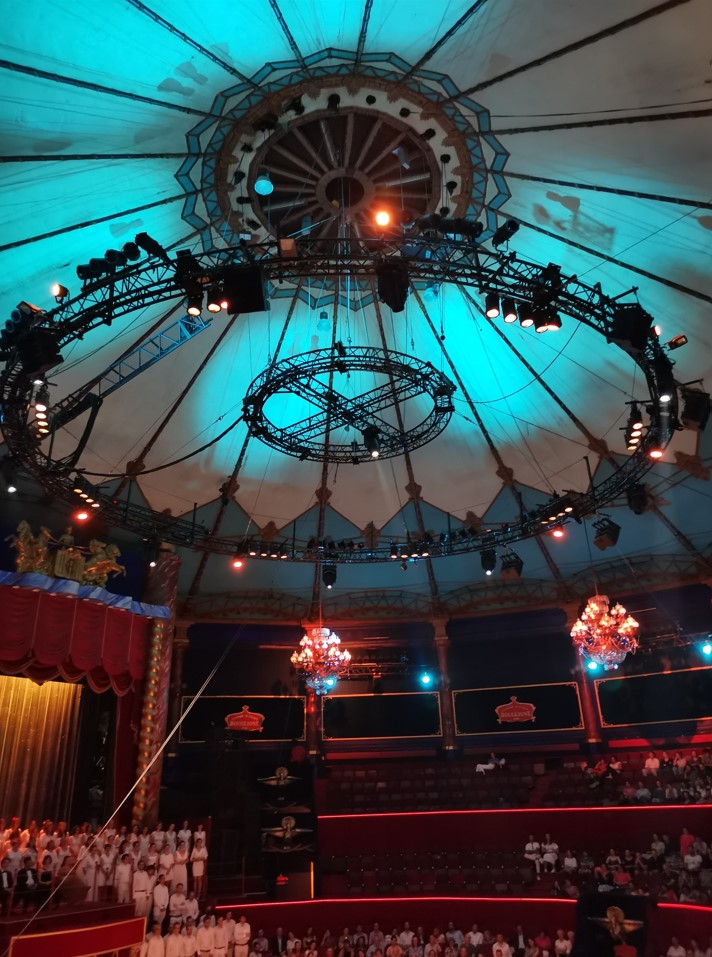Winter Circus
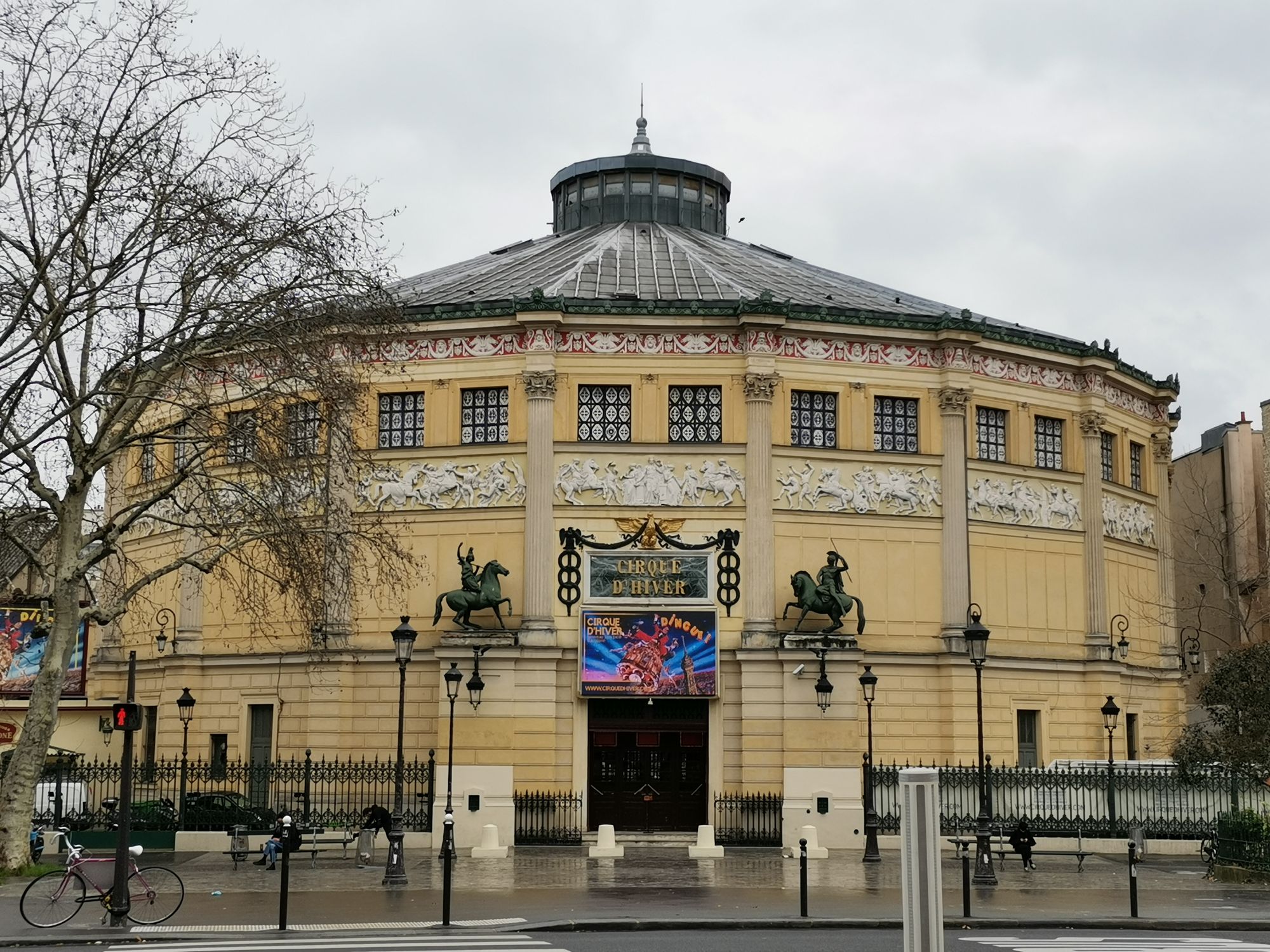
Where is Cirque d'Hiver located, and how do I get there?
Cirque d'Hiver is located at 110 rue Amelot, in the 11th arrondissement of Paris. To get there, you can take the Filles du Calvaire metro station (line 8), which is just a 1-minute walk from the Cirque. In addition, bus line 96 stops at Jean-Pierre Timbaud, a two-minute walk from Cirque d'Hiver. This makes it easily accessible to spectators.
The Cirque d'Hiver is located in the far north of the Marais district.
What is the history of Cirque d'Hiver de Paris?
The Cirque d'Hiver de Paris, often referred to simply as the Cirque d'Hiver, is a concert hall built in 1852 by architect Jacques Hittorff, and known successively as the “Cirque Napoléon” and the “Cirque national”. It was listed as a historic monument on February 10, 1975.
Who was behind the Cirque d'Hiver project and how was it financed?
The Cirque d'Hiver project was initiated by Louis Dejean, owner of the Cirque d'Été in the Champs-Élysées gardens. With the support of the Duc de Morny, half-brother of the future Emperor Napoleon III, Dejean obtained permission to build the Cirque d'Hiver. Financing was made possible thanks to the financial support of the Duc de Morny.
How was the Cirque d'Hiver designed and built?
The Cirque d'Hiver was designed by architect Jacques Hittorff, who had also worked on the Cirque d'Été and the Gare du Nord. The building was constructed in a record time of three months, with impressive dimensions: a twenty-sided polygon, a diameter of 42 meters, and an original capacity of 5,900 spectators. The circus was lit by twenty-one gas chandeliers.
What were the Cirque d'Hiver's main attractions throughout its history?
Cirque d'Hiver was mainly devoted to the equestrian arts in its early days. Personalities such as Franconi, Baucher and Jules Léotard, the first “flying artist”, left their mark on its history. It has also hosted classical music concerts, including Jules Pasdeloup's famous Concerts populaires.
What other uses has Cirque d'Hiver had over the years?
The Cirque d'Hiver has been used for a variety of other activities, including cinema, with Société Pathé, and theater, under the direction of Firmin Gémier. It was also the venue for political meetings. Later, it was the home of the popular French TV program “La Piste aux étoiles”.
Who are the current owners and managers of the Cirque d'Hiver?
Since 1934, Cirque d'Hiver has been in the hands of the Bouglione family, who also gave their name to the circus company based there. The Bougliones have continued to produce traditional circus shows, variety shows and other events.
What shows are currently on offer at Cirque d'Hiver?
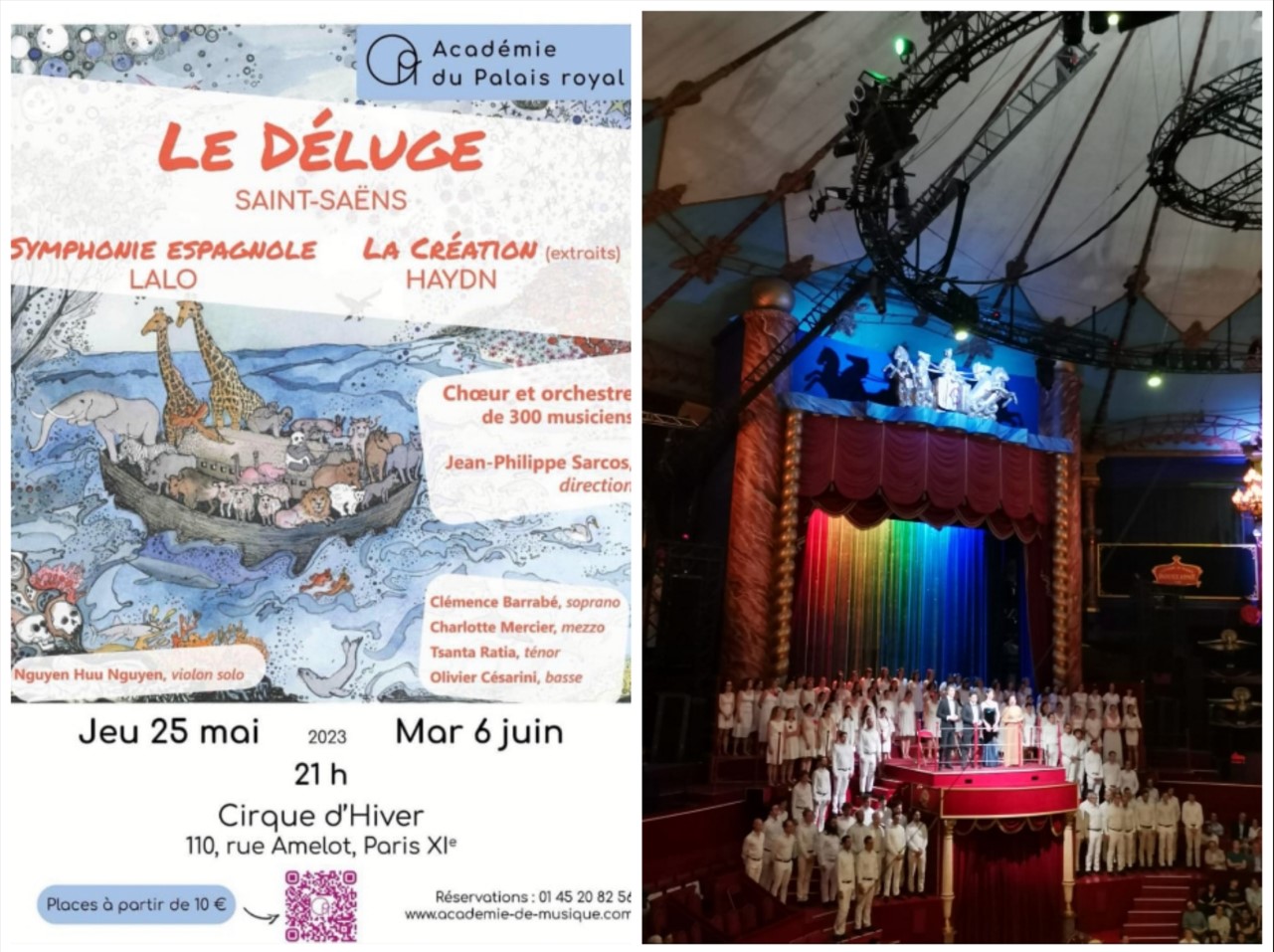 Cirque d'Hiver continues to produce a traditional circus show every winter, reviving the successes of the past. Recent productions include shows such as “Rire,” “Surprise,” “Exploit,” and “Dingue.” The circus tradition is perpetuated at this iconic Parisian establishment.
Cirque d'Hiver continues to produce a traditional circus show every winter, reviving the successes of the past. Recent productions include shows such as “Rire,” “Surprise,” “Exploit,” and “Dingue.” The circus tradition is perpetuated at this iconic Parisian establishment.On May 25 and June 6, 2023, the Palais Royal Academy produced a musical show featuring 300 choristers and musicians on the theme of Saint-Saëns' “Déluge”.
The Cirque d'Hiver in brief
[Louis Dejean, owner of the summer circus built in the gardens of the Champs-Élysées, also wanted to open a circus for the winter season.
With the support of the Duc de Morny, he obtained the land on the site of the former Belleville spring reservoir.
[Jacques-Ignace Hittorff, architect of the Cirque d'été and the Gare du Nord, built the new edifice in 3 months. This great architect is buried in the cimetière de Montmartre.
The establishment, completed shortly afterwards on December 2, 1852, took the name cirque Napoléon.
This 20-sided polygon, with a diameter of 41 meters, could hold 4,000 spectators, today 2090. Administered in 1870 by Victor Franconi, then by his son Charles from 1897 to 1907, the circus came under the management of the Bouglione brothers in 1934.
Cirque d'Hiver is located in the northern Marais district, 1 minute's walk from the Filles du Calvaire metro station (line 8).
It can also be reached by bus line 96, Jean-Pierre Timbaud stop, which is a two-minute walk from the Cirque.
Photos of Cirque d'Hiver
Back to Historical heritage of the Marais
